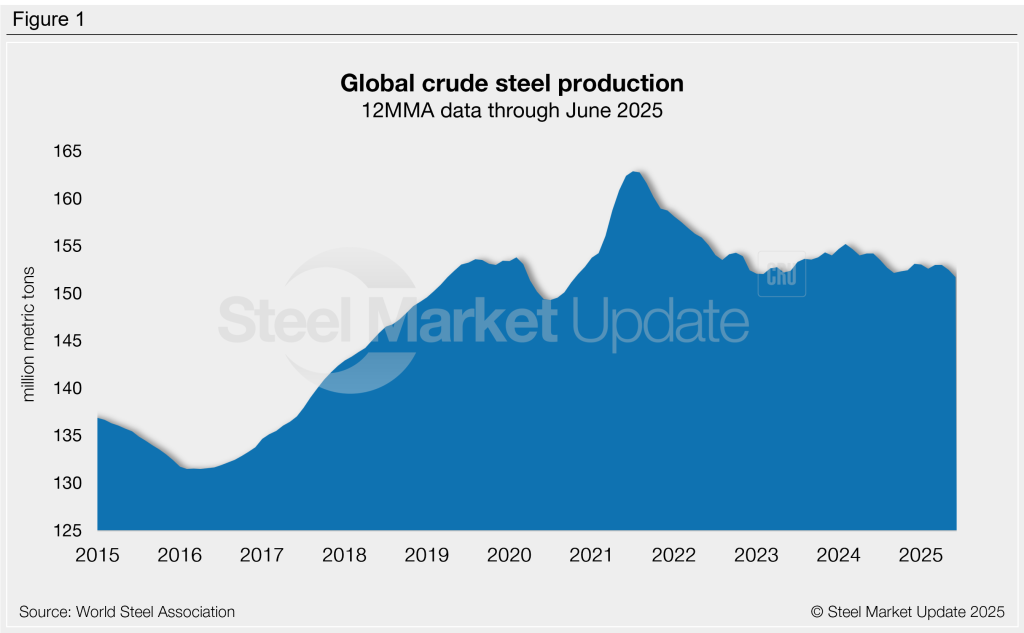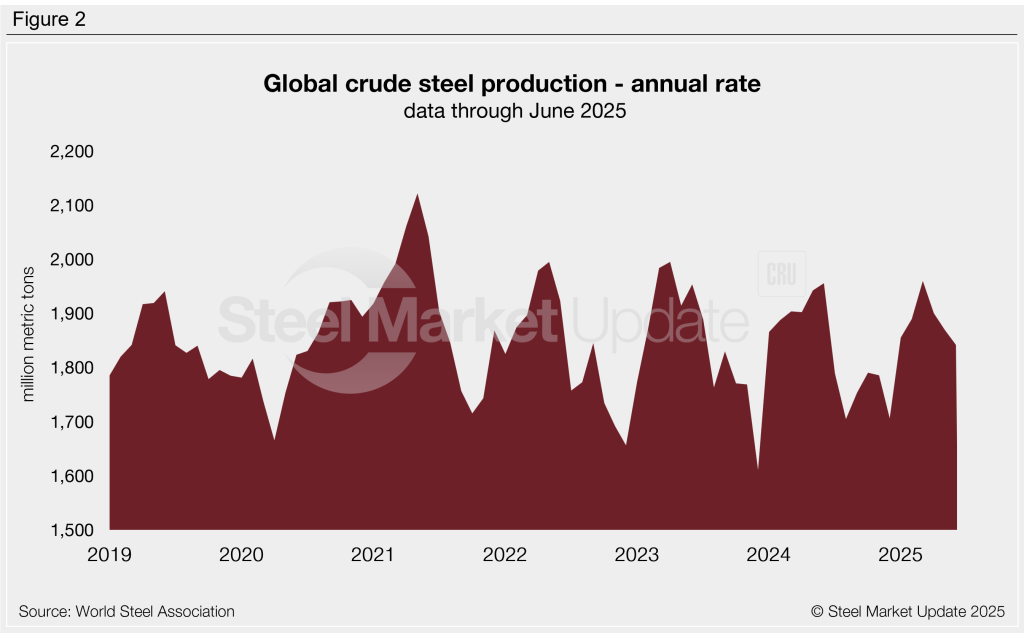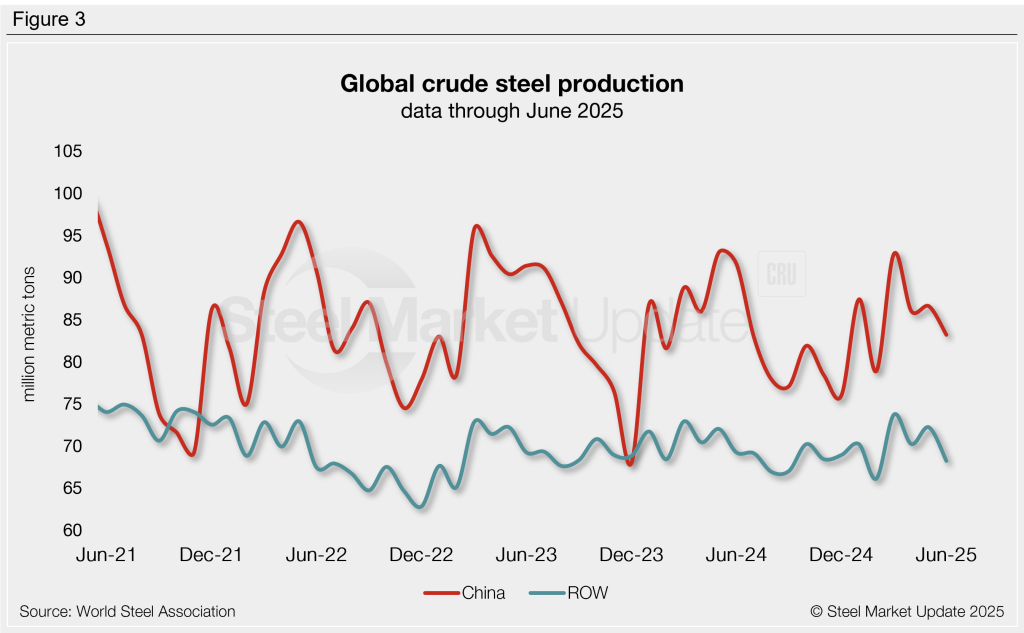Analysis
July 23, 2025
Global steel production slips in June
Written by Brett Linton
The total volume of raw steel produced around the globe fell by 5% from May to June, according to recent data published by the World Steel Association (worldsteel).
World steel mill output was estimated at 151.4 million metric tons (mt) in June. This rate was slightly below the 2025 average of 155.9 million mt and 6% lower than the same month last year. Compared to the two-year high of 166.5 million mt seen in March, June production was down 9%.
On an annualized 12-month moving average (12MMA) basis, production averaged 151.7 million mt per month from July 2024 through June 2025 (Figure 1). This annual rate is 2% lower than the same period one year earlier. Annual output has generally remained in the 152-154 million mt range for the past three years, similar to pre-pandemic volumes.

June output equates to roughly 5.05 million mt per day, down 1% month over month (m/m) and the lowest daily rate recorded this year. Back in March, the daily production rate reached a near-two-year high rate of 5.37 million mt. For comparison, daily production in 2024 climbed as high as 5.36 million mt per day (June) and fell as low as 4.67 million mt per day (August and December). At June’s pace, annual global production would total approximately 1.84 billion mt (Figure 2).

Regional breakdown
China is the world’s top steel producing country, accounting for 55% of June’s total output (Figure 3). Chinese production fell 4% m/m in June to 83.2 million mt, 9% less than one year ago. In 2024, Chinese mill output averaged 83.5 million mt per month, peaking in June at 93.0 million mt. Over the past three years, Chinese mills have consistently accounted for 50-57% of total global production.
Steel output from the rest of the world (ROW) totaled 68.2 million mt in June, down 6% from May and 1% below the same month last year. ROW production averaged 69.6 million mt per month in 2024, peaking in March at 72.9 million mt.

Top producing countries
By country, India retained its position as the second-largest steelmaker in June, producing 13.6 million mt, or 9% of the global total. Next up was the United States (6.9 million mt or 5%), followed by Japan (6.7 million mt or 4%), Russia (estimated at 5.6 million mt or 4%), South Korea (5.0 million mt or 3%), Turkey (2.9 million mt or 2%), Brazil (2.8 million mt or 2%), Germany (2.7 million mt or 2%), and Iran (estimated at 2.2 million mt or 1%).
Comparing year-to-date (YTD) output by country to the same period of 2024 reveals modest shifts in market share. In the first half of 2025, German production fell 12% from the same period of 2024, Iran was down 10%, Russia declined 6%, and Japan fell 5%. India was the outlier, with production increasing 9%.







